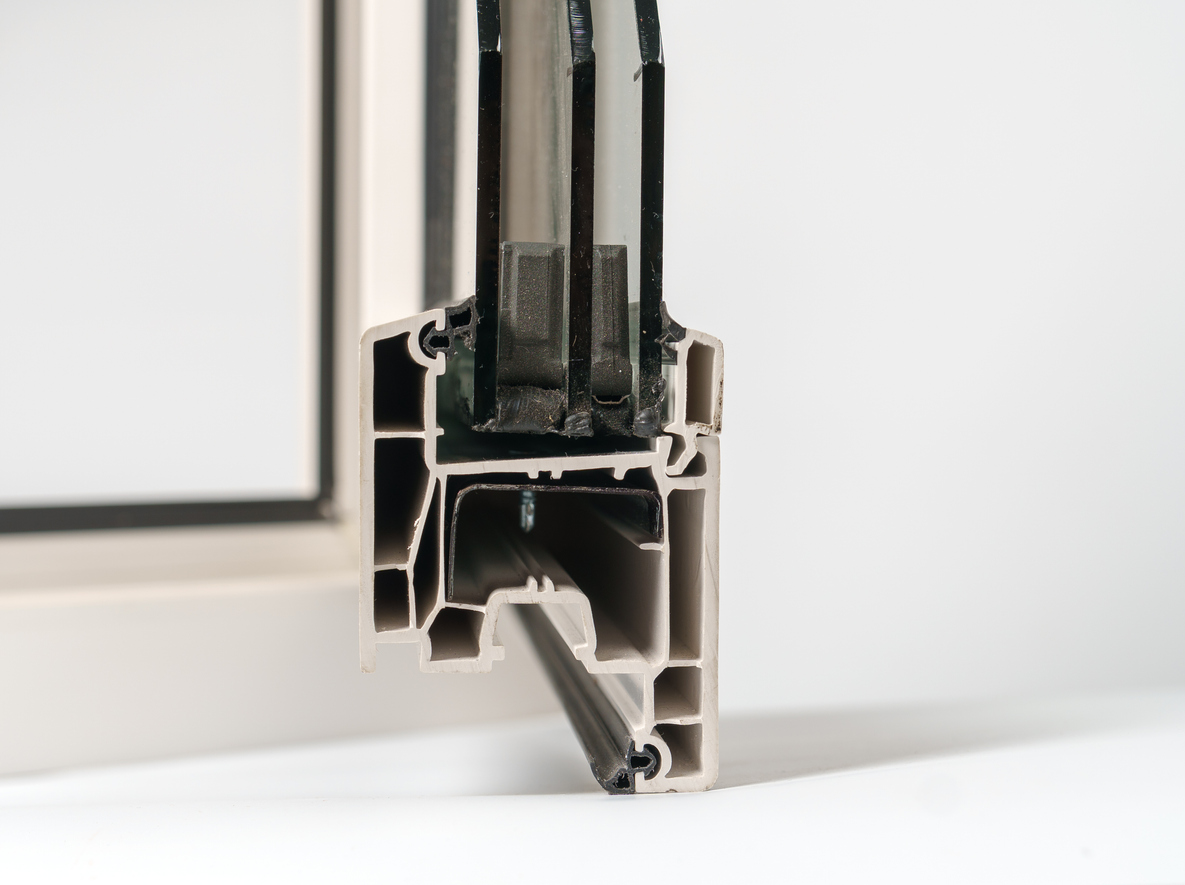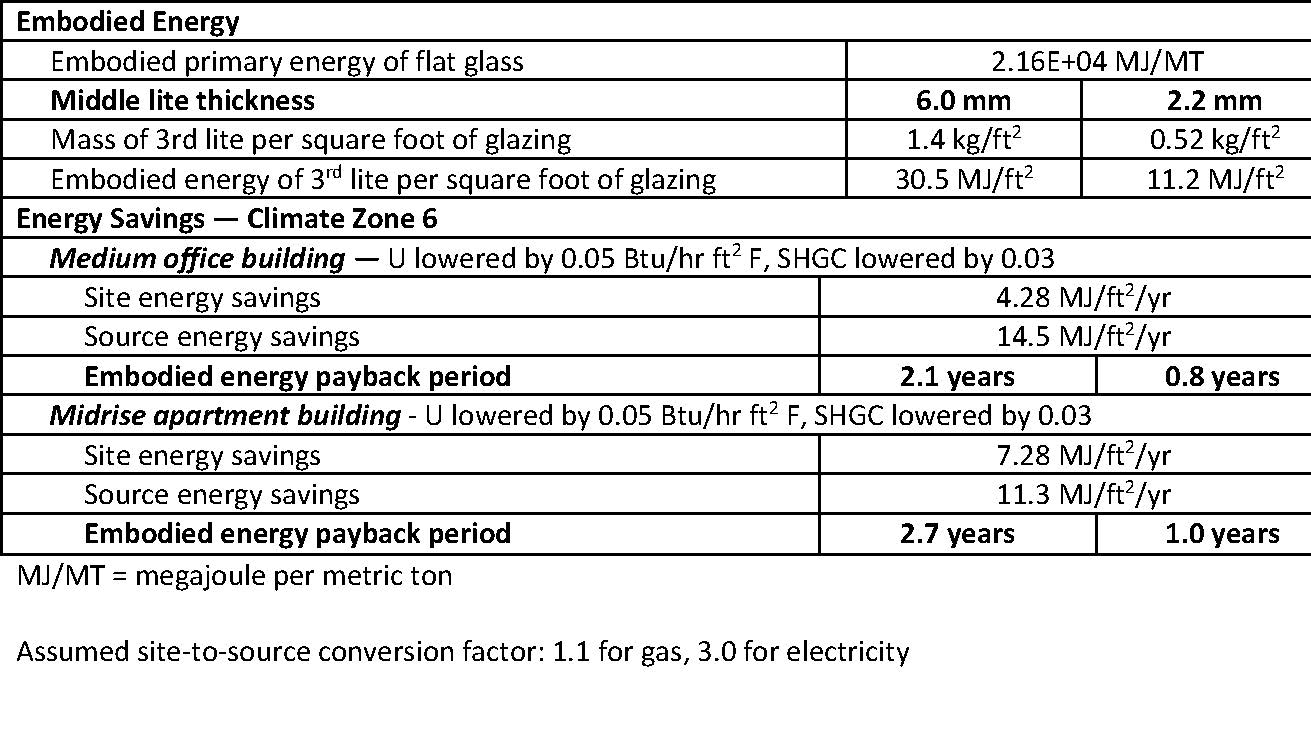Triple Glazing and Embodied Energy
Yes, the juice is worth the squeeze

As both national and local groups look for solutions to address climate change, decarbonize the buildings segment and greatly increase energy efficiency, it is clear that high-performance fenestration has an important role to play. Is this the momentum that is needed to finally make triple glazing go mainstream in colder climates?
There are a number of considerations with moving to triple glazing including cost, manufacturing changes, frame modifications, weight and more. There are significant efforts underway to ease the transition, whether that is using traditional triple glazing or the newer concept of “thin triples” using a thin glass middle lite. The numerous support initiatives include technical support from Lawrence Berkeley National Laboratory, ongoing field demonstrations across the country by Pacific Northwest National Laboratory, market assessments by Steve Selkowitz and the Northwest Energy Efficiency Alliance, and the new Partnership for Advanced Window Solutions.
The embodied energy question
In this article, I will just address one question that has been raised about embodied energy: Is the energy savings gained by moving from double to triple glazing outweighed by the extra energy used to make the third pane in the first place?
This is a fairly straightforward question to answer, at least in a simplified manner. First, the embodied primary energy associated with manufacturing the added third lite is easily calculated from the National Glass Association industry-wide environmental product declaration for flat glass, ASTM-EPD121. This will vary based on the thickness of glass, as shown below. Next, this is compared against the corresponding energy savings in a representative building from moving from double glazing to triple glazing, which will vary based on building type and location. The result can be easily understood in terms of the payback time—how long until the extra energy to make the third lite is “paid back” by the energy savings.
Measuring energy impacts
For commercial applications, PNNL has developed prototype building models to assess the energy impacts of different energy efficiency measures and overall advancements in the ASHRAE 90.1 standard. The ASHRAE 90.1 envelope subcommittee uses two of the prototypes to evaluate proposed changes to envelope requirements, including fenestration U-factor and solar heat gain coefficient, SHGC: the medium office model (three-story, 53,600-square-foot floor area, 33 percent window-to-wall-ratio ribbon windows) and the midrise apartment model (four-story, 33,700 square-foot floor area, 20 percent WWR punched openings).
Per the methodology used by ASHRAE 90.1, the average reduction in U-factor and SHGC by moving from double to triple glazing with the same low-emissivity, frame, spacer and gas fill in commercial window wall is 0.05 Btu/hr ft2 F and 0.03, respectively. The energy savings are shown for ASHRAE 90.1 and IECC climate zone 6 using Rochester, Minnesota, as the representative city. The embodied energy will depend on the thickness of the middle lite, which can be 6-millimeter in traditional full-width commercial triple glazing, but some fabricators are also exploring a commercial version of “thin triples” with 2.2-millimeter glass as the center lite.
The results
As shown in the table, the embodied energy of the third lite is paid back in only nine months to 2.7 years in climate zone 6. The payback in climate zone 5 (including places like Chicago and Lincoln, Nebraska) is three to nine months more. Overall, the payback is a little longer than in residential due to using thicker glass in commercial applications, but it is still very short compared to the lifetime savings.

A clear answer
This analysis is somewhat simplified, just answering the general question about adding the extra pane of glass. It does not include embodied energy associated with changes in the spacer edge assembly or the frame, and the specific energy savings and carbon impact for any specific building will vary based on building characteristics, location, local utility source and fuel types.
Nonetheless, the answer is clear: the embodied energy from the third lite is small compared to the energy savings, paid back quickly, and the cumulative energy savings from triple glazing in northern climates will be significant over the life of the window as well as deliver better comfort to occupants and resilience in the face of more extreme weather events. In other words, yes, the juice is worth the squeeze.
Resources
- “Thin Triple Pane Windows: A Market Transformation Strategy for Affordable R5 Windows,” by Stephen Selkowitz, available in the Northwest Energy Efficiency Alliance, Report #E20-310, April 2020.
- Flat Glass Environmental Product Declaration, National Glass Association, ASTM-EPD121, December 2019 (pdf).
- ENERGY STAR® Windows, Doors, and Skylights Version 7.0 Criteria Analysis Report, July 2021 (pdf).
- PNNL prototype buildings


